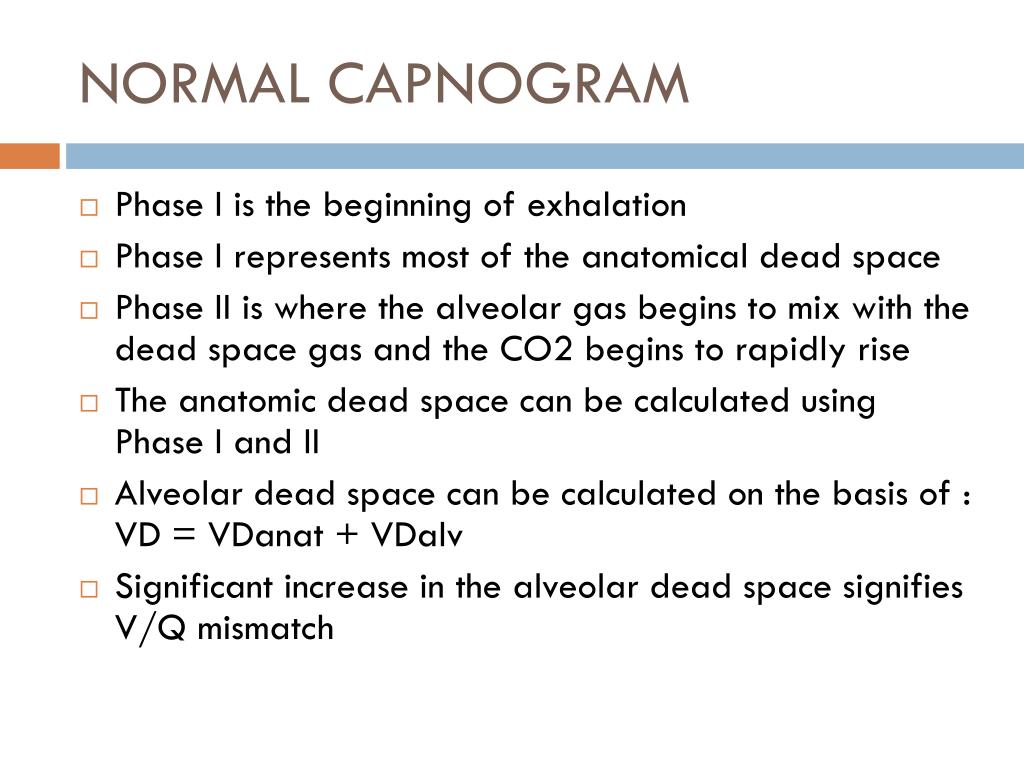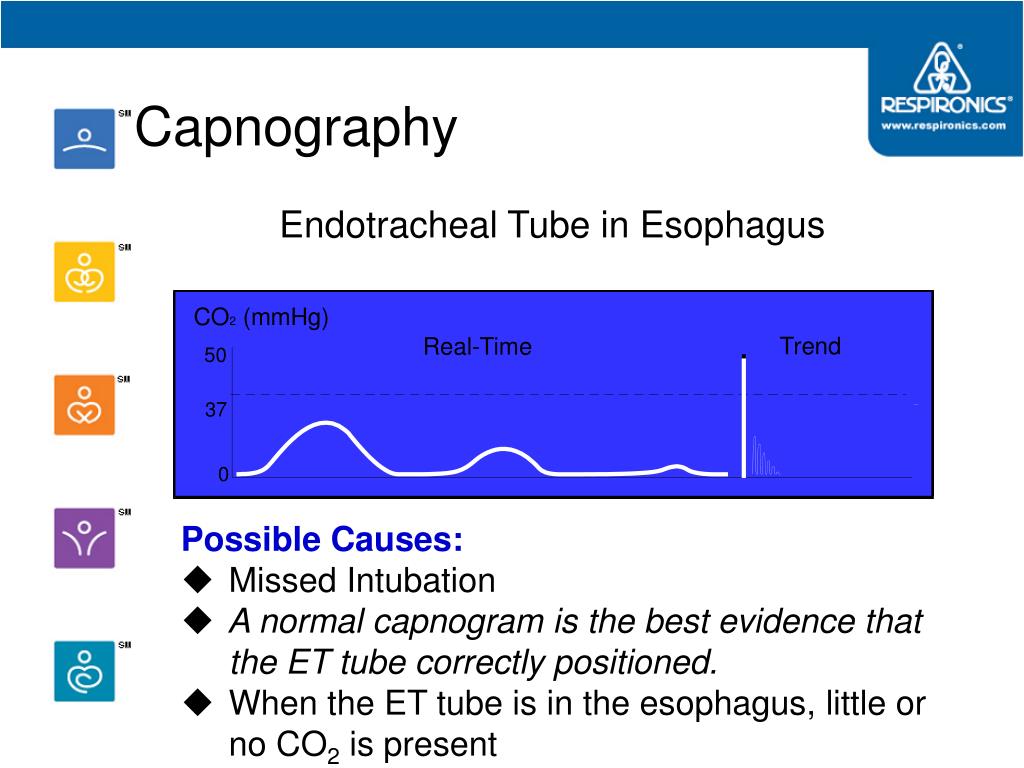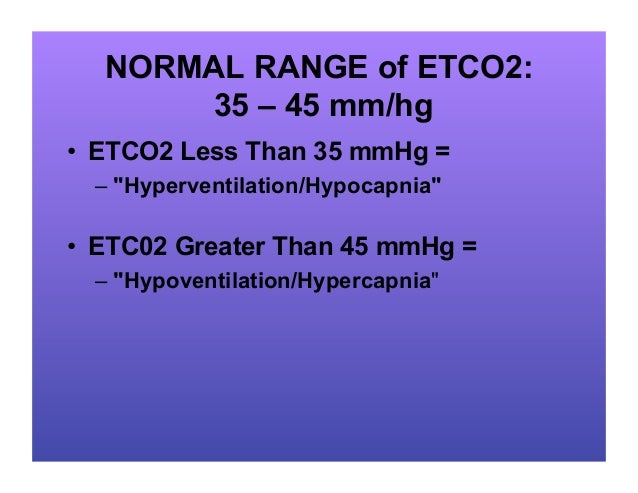
Anatomic dead space (e.g., trachea and large bronchi) – with each breath gas enters these areas, but doesn't participate in gas exchange.Dead space refers to inhaled gas that doesn't participate in carbon dioxide clearance.If the etCO2 curve doesn't reach a plateau, then the numeric value is less reliable. Both the numeric value and the shape of the etCO2 tracing are important.Waveform capnography should be monitored in all intubated patients and displayed on the monitor (as above).etCO2 is a measurement of the partial pressure of CO2 in gas expired at the end of exhalation (when exhaled gas will most closely resemble the alveolar CO2 concentration).
#NORMAL RANGE OF CAPNOGRAPHY HOW TO#
Understanding how to interpret etCO2 waveforms.



Paying attention to etCO2 values (e.g., noting them daily in reviews of the patient, along with other vital signs).Within the next decade, continuous waveform capnography will likely become a universal standard of care across all well-resourced intensive care units.Īs the use of waveform capnography expands, we need to be thoughtful about integrating this into our practice. Capnography is increasingly recommended both to confirm endotracheal tube insertion and to subsequently monitor the patency and effectiveness of ventilation throughout the duration of intubation. Capnography was pioneered in the operating room, but the safety implications for all critically ill patients are clear (the standard of safety monitoring in the ICU shouldn't be lower than in the operating room). Failure to use waveform capnography contributed to >70% of ICU-related airway deaths in the NAP4 audit. Waveform capnography is emerging as a standard monitoring tool to improve safety among intubated patients. Once that has been done you can use an end tidal Co2 monitor as opposed to drawing multiple ABG's.Introduction – an emerging standard of care It is best to get an ABG along side the end tidal to calculate the patients shunt. As stated before end tidal is slightly different. So the short answer is you are right about the ranges 35-45 but that is for actual PaCo2 drawn from an ABG. For a person with "normal" lungs the difference between end tidal and Paco2 can vary between 5-8mmHg depending on the book your reading. have values been revised since i last came out of school?Įnd tidal Co2 ranges vary slightly from actual PaCo2 and can be affected by many factors depending on the condition of the patients lungs. to make a long story short, i called the doctor after it was done (it was 30) and told him it was low, the patient may have alkalosis (from what i remember 15 years ago normal values are 35-45) and he told me that was perfectly normal.

Have a quick question- The physician had requested an end tidal co2 on a trach and vent pediatric patient. And, as explained, the EtCO2 may not reflect the exact PaCO2. This would be repeat correlated periodically per facility protocol to make sure that the relationship between the two still stands.īeing able to determine alkalosis from an EtCO2 would be very difficult, since you have no pH or base value with which to balance the acid in the equation. In order to help me guide my vent, I now know that I want to make adjustments so that my EtCO2 reads between 26 and 31. If the ABG comes back with a PaCO2 of 36, I now know that there is a difference of -4. We would hook up the EtCO2 and record the number (I'll say 32) at the time the ABG is drawn. The neurosurgeon may want EtCO2 monitoring and want to keep the PaCO2 between 30 and 35. Take, for example, a patient with massive head injury. In the case of EtCO2, what matters is how it reflects the PaCO2. Remember that all numbers in critical care must have a second number or observation to validate the first. EtCO2 values are looked at in relation to PaCO2 values.


 0 kommentar(er)
0 kommentar(er)
